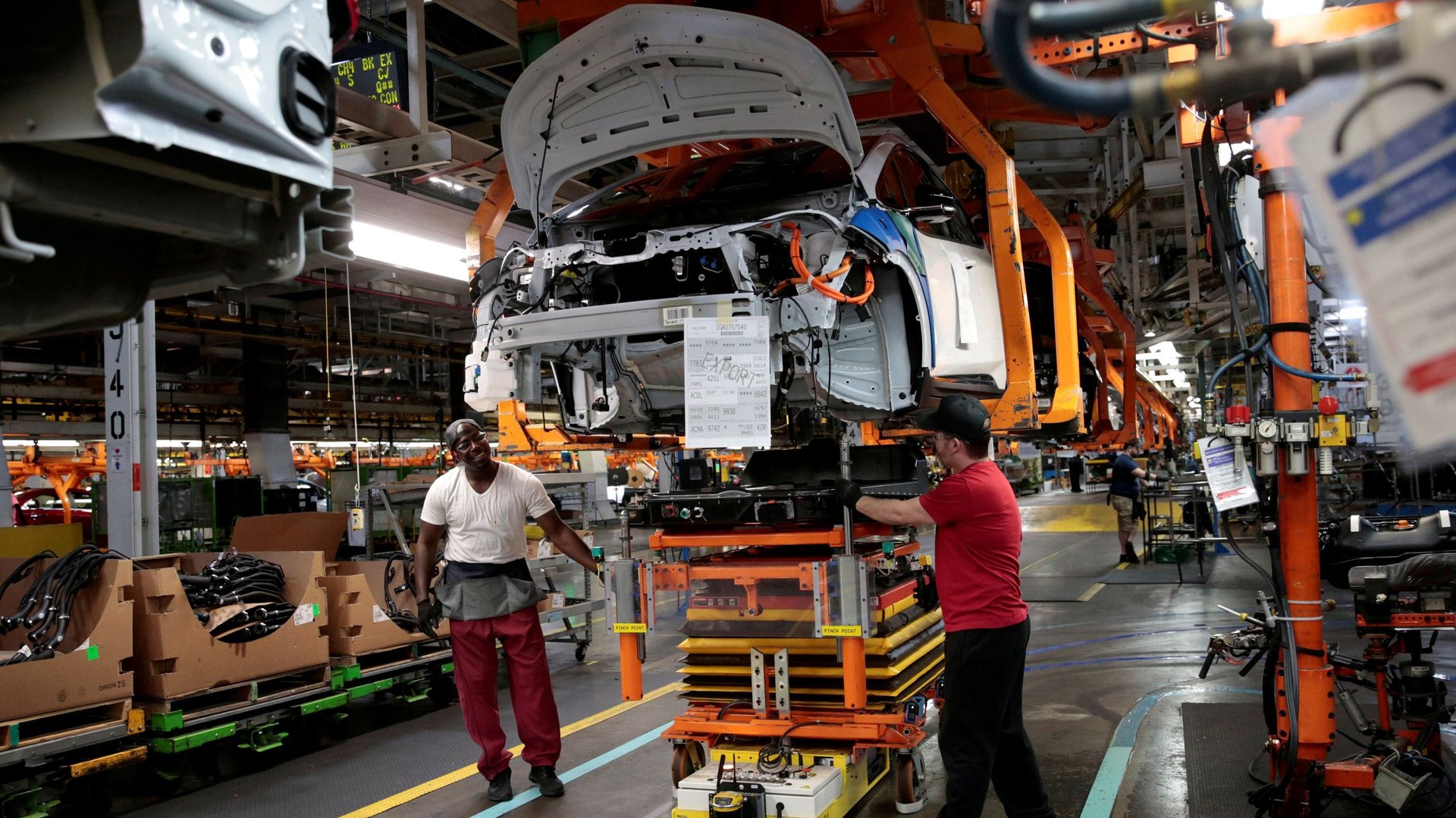Biden just announced the most significant regulation of carbon emissions in US history
The Biden administration announced on Aug. 5 that it will re-instate fuel efficiency standards for cars that were first rolled out by Barack Obama and then rolled back by Donald Trump. Biden also said he will sign an executive order mandating that half of all vehicles sold in the US be electric by 2030, up from just 2% today.


The Biden administration announced on Aug. 5 that it will re-instate fuel efficiency standards for cars that were first rolled out by Barack Obama and then rolled back by Donald Trump. Biden also said he will sign an executive order mandating that half of all vehicles sold in the US be electric by 2030, up from just 2% today.
The proposed rules amount to the most significant federal regulation on greenhouse gas emissions in US history, and aim to cut the country’s annual carbon footprint by one-third by 2026. They could also be one of the last nails in the coffin for internal combustion vehicles in the US.
The standards, which will now need to wind through the typical months-long federal approval process, require that by 2026, new passenger cars sold in the US will need to get at least 52 miles per gallon, on average. That’s up from 43.6 for 2020 models, as required by Trump. The average today is just 25.7.
In the past, changing control of the presidency meant fuel efficiency standards were often relaxed after a Republican entered the White House. But Biden has a key advantage over Obama in making the rules stick: Many of the same automakers that previously opposed such standards in court now support them.
Growing public demand for electric vehicles and rapid improvements in the cost and performance of EV batteries have made EVs a source of potential profits (Tesla, which only sells EVs, is now the world’s most valuable automaker). GM and Fiat Chrysler, owned by the Dutch-headquartered firm Stellantis, were among the automakers that backed a Trump administration legal challenge to emissions standards imposed by the state of California in 2019. But on Aug. 5, when Biden announced the new rules, GM, Stellantis, and Ford said they will aim to make EVs account for 40-50% of their sales by 2030.
Automakers are plowing cash into electric vehicles
Biden’s fuel efficiency target is not merely about getting more miles out of a gallon of gasoline. It’s ultimately designed to make automakers decide that it’s more cost-effective to scrap fossil fuels altogether. Most other major automakers have already laid out plans to begin phasing out internal combustion engines in the next decade. GM says it will eliminate them from its lineup by 2035. Ford, Volkswagen, and Stellantis have all committed to have EVs make up 40% to 50% of sales by 2030.
For the most part, automakers are putting their money where their mouth is. According to an analysis by Bloomberg, Volkswagen, Stellantis, and GM plan to direct more than half of their total capital spending toward EVs by the end of the decade.
The EV transition is guaranteed, but the timeline isn’t
It’s virtually certain that gas-burning engines will lose market share to EVs in the coming years. But exactly how long they have left remains uncertain. In the US, it depends in part on whether Biden gets a second term in office (or hands the reigns to a like-minded successor). The administration left its heaviest lifting for the future, saying that it will eventually roll out even stricter fuel standards for the period after 2026. And the infrastructure bill released by the Senate on Aug. 1 includes just $7.5 billion for EV charging infrastructure, which likely falls short of what is needed for the administration’s goal to install half a million chargers (a goal that itself is only one-fifth of what will be needed by 2030).
For now, the Biden administration has done just about all it can do, said Sara Baldwin, electrification policy director at Energy Innovation, a research firm. Now, it’s up to Congress to find pony up more tax incentives and other forms of support for automakers and electric utilities to build out infrastructure, retool factories, and retrain workers.
“Technology and cost dynamics have fundamentally changed this market just in the last few years,” she said. “But businesses will only go as far as they’re required and where they see the near-term profit opportunity. The thing that’s still missing is robust incentives coming out of Congress for all-electric future.”